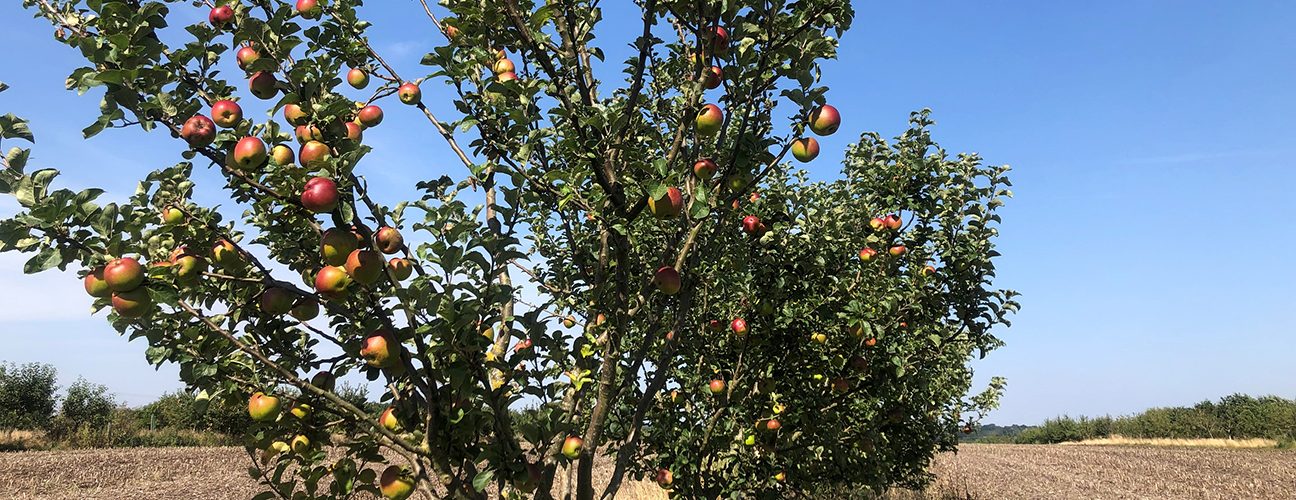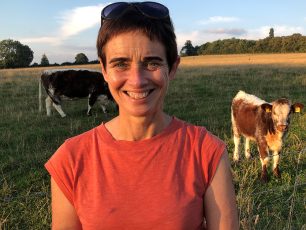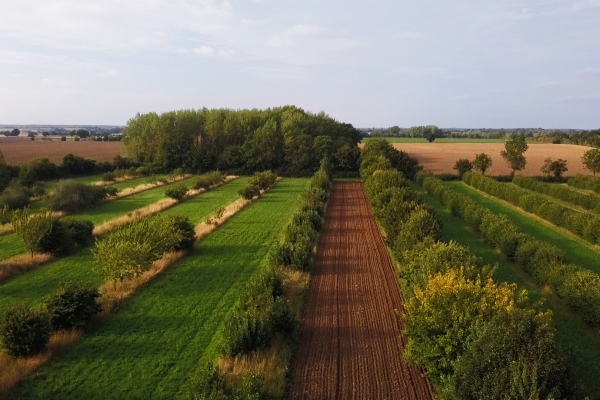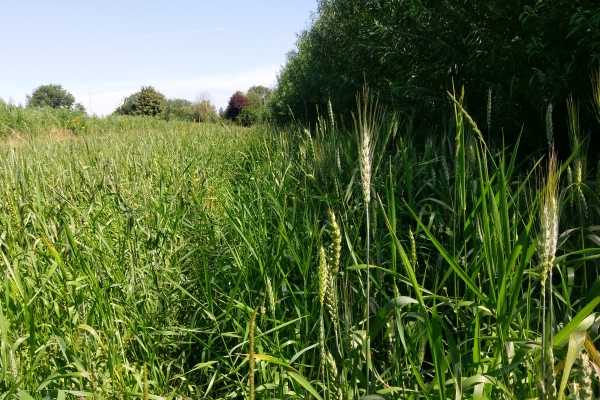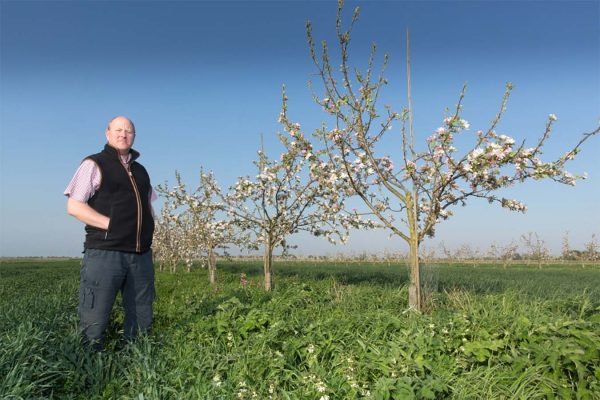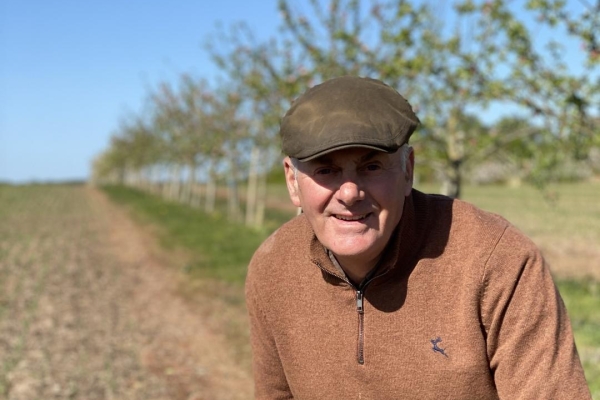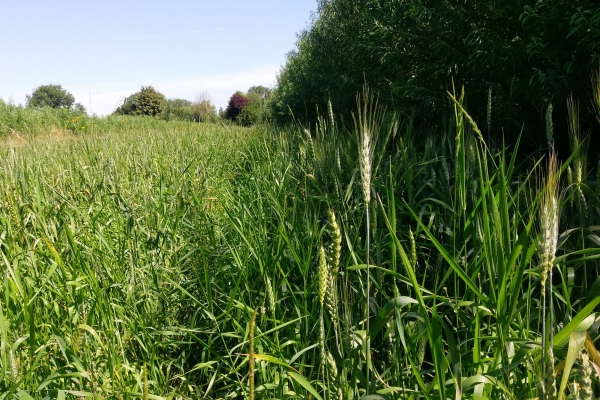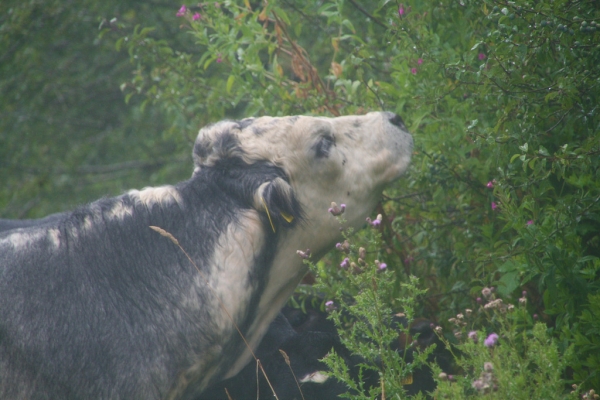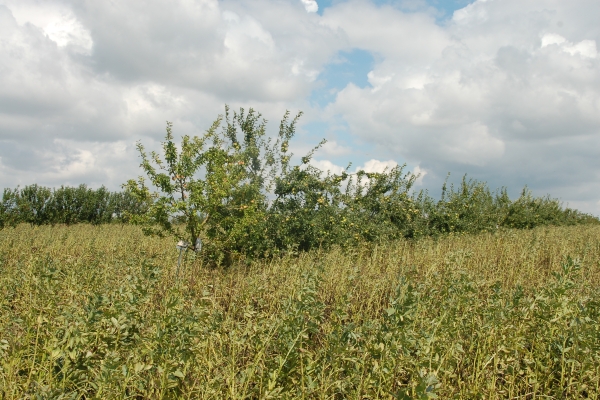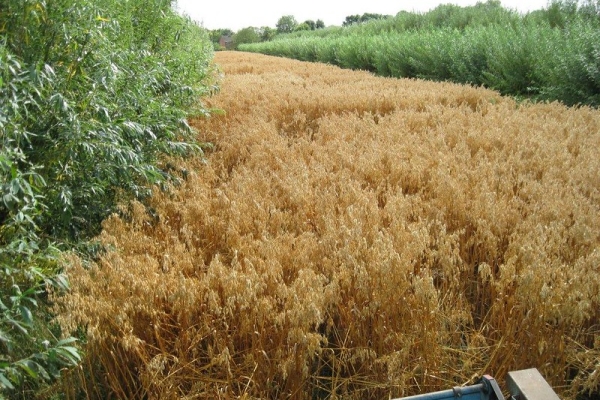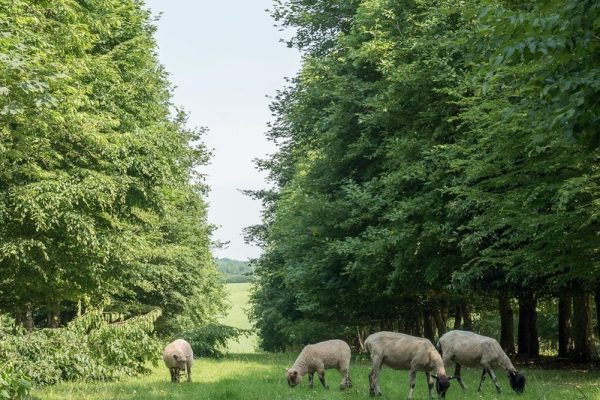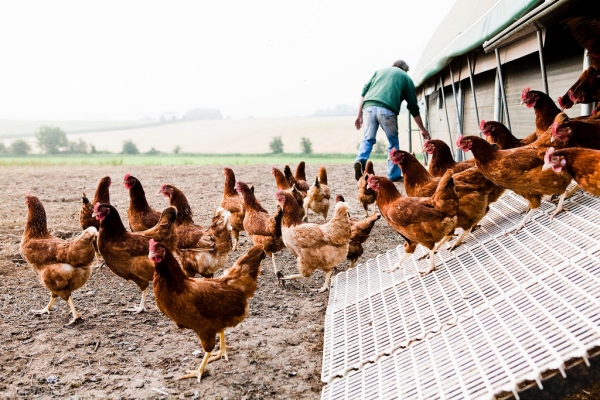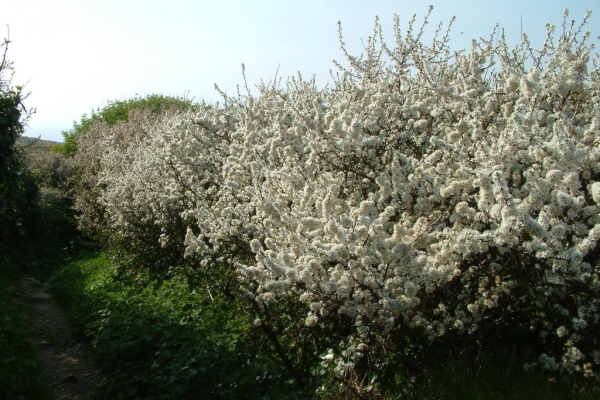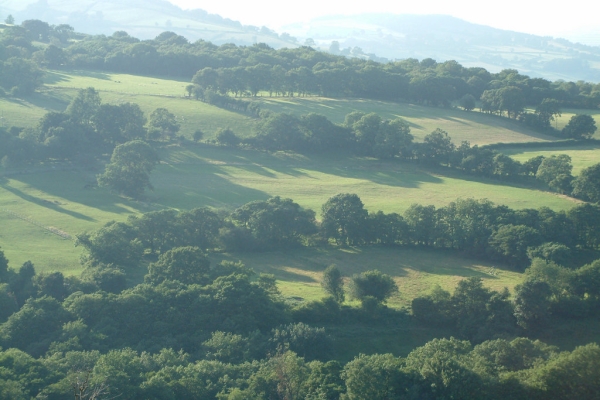Don’t miss the UK’s first Agroforestry Show – it’ll be TREEmendous!
Don’t miss the TREEmendous occasion that is the UK’s first Agroforestry show on 6-7th September. Held on a farm in Wiltshire come and find out how trees on farms are an essential tool for agroecological farming systems.
Does agroforestry have the power to enable farming to tackle climate change, deliver for nature and continue to produce healthy, nutritious food and sustainable timber? I believe it does and that is why I am so excited to be part of the team that is bringing you the UK’s first agroforestry show.
What do you picture when someone asks you to imagine agroforestry? Is it the frequently seen image of leading agroforester Stephen Briggs’ rows of apple trees in amongst arable crops? Yet that is only one example of an agroforestry system. Any combination of trees and shrubs which are deliberately integrated into farming systems to do a job, whether that be to provide services such as shade and shelter, capture carbon emissions or deliver products such as fruit and timber, is agroforestry.
Ever since we delivered a sell-out agroforestry conference back in 2017, which awakened the UK to the possibility of agroforestry, Ben Raskin of the Soil Association and I have been mulling over what was needed next. How do we give both farmers and foresters the tools, knowledge and confidence to come together and make agroforestry a mainstream land use? One of our answers was to organise a 2-day agroforestry festival!
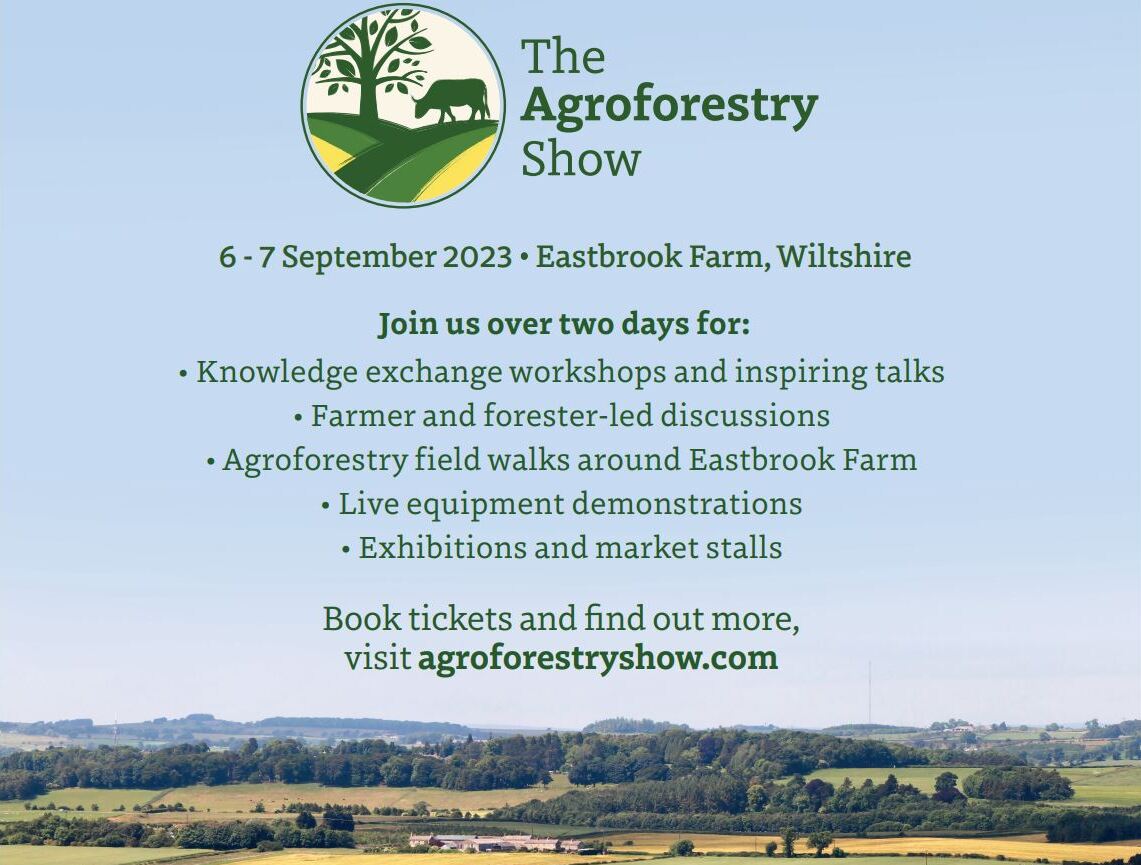
So here are my 10 reasons why you should join us at the show:
- Hear from farmers who have done it. I’m excited to hear George Young explain how trees are an important component of his farm’s regenerative transition, especially as the Woodland Trust supported his scheme via our Trees for your Farm scheme, but there will also be lots of opportunities to pick up useful tips from experienced agroforesters such as Stephen Briggs and Peter Aspin.
- Find out how the finance will stack up. A great opportunity to find out what Government grants are currently available and future plans for support in England, Wales and Scotland. But I am also excited to hear from Tim Coates, farmer and founder of Oxbury Bank – the UK’s dedicated agricultural bank – on how to fund an agroforestry scheme.
- Learn how to manage your agroforestry system. Join a fruit tree pruning demonstration or a mobile sawmill demonstration for on-farm timber processing and see a wide range of tree protection.
- Balancing the pressures on land uses. It’s a while since I was involved in practical farming but it does feel as if the sector is on the cusp of real change led by the regenerative farming movement. Both exciting and challenging, the show will help demonstrate how agroforestry can deliver the win-win scenario of maintaining food production whilst also delivering a range of public benefits. Hear about opportunities in natural capital markets, new research and future nut production.
- Tackling issues. I strongly believe trees should be part of every farm management plan to help tackle the many challenges you as farmers are facing. So, I am delighted that we have organised lots of interesting sessions on topics such as ammonia emissions and implications of extreme weather. This includes a session by farmer David Brass of Lakes Free Range Egg Co. and Dr Bill Bealey of CEH explaining how trees can help mitigate ammonia emission following their experiences of in-field trials. But I also know Dr Lindsay Whistance will share valuable insights into how trees can support good livestock welfare and performance in the face of increasing heat waves and other extreme weather events.
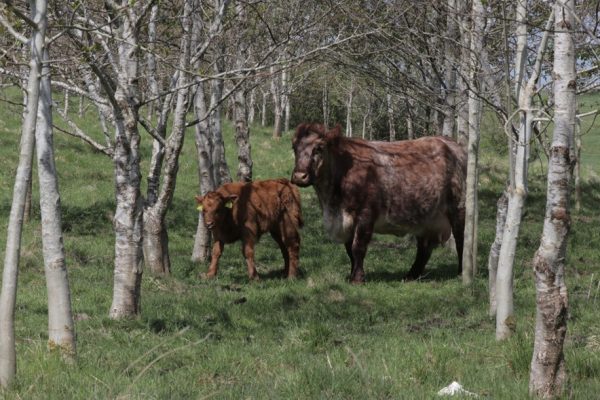
- Agroforestry Design Clinic. A great opportunity to drop into a free 1:1 design session with an adviser and start to plan your own scheme. Bring a map of your farm or agroforestry design to get expert insights and top tips. Simply sign up when you arrive.
- See it in action on an Agroforestry Farm Walk. Take 1.5 hours out of the busy seminar programme and walk around Eastbrook Farm and experience agroforestry in action. Whether it’s Helen’s woodland pigs, the newly planted wood pasture roundels designed by the Woodland Trust’s Mark Franklin, or the silvoarable alley cropping, Helen and Ben will share the lessons they have learnt. Or join a tailored Hedge Safari with Prof Pippa Chapman of University of Leeds or a dung beetle safari with Sally-Ann Spence.
- Connect with tree nurseries. An expansion of the supply of agroforestry trees, especially fruit and nut trees, is essential if we are to upscale agroforestry, and I strongly believe this must focus on UK production to reduce the risk of importing tree diseases and pests. So, it’s great that we have representatives from 3 nurseries speaking and exhibiting at the show sharing their plans for the future.
- Bringing foresters and farmers together. Coming from a farming background I know how separate the two sectors are, and so I am delighted that we have such strong support for the show from the forestry sector. Whether it is Tilhill highlighting how forestry advisors can aid your agroforestry journey, or Caroline Ayre from Evolving Forests explaining the feasibility of producing high value timber within low-density agroforestry systems, there will be a plethora of experts and connections to be made.
- And finally, if the above is not enough to convince you to come to this Agroforestry Jamboree, then maybe the show party on the evening of the 6th with a DJ set from Andy Cato (Groove Armada fame) and local bands is. Pitch your tent on site and enjoy the music and food much of which will be locally grown and provided by Helen Browning’s Royal Oak.
Don’t miss the UK’s first Agroforestry show – find out details here Home | Agroforestry show
